|
Explanation: It is
unfortunate to find these strands and clumps of bull kelp strewn along the
sand beach here in southern Oregon, USA. Unfortunate, because kelp
forests of the ocean are not doing well. But this gives us the
opportunity to examine and explore this wondrous brown alga.
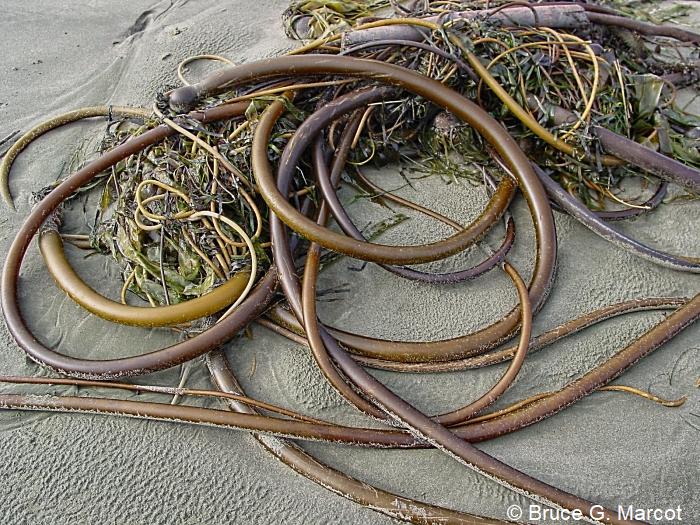
Bull kelp grows in the subtidal zone where, in profusion,
it provides habitat for fish, crabs, snails, sea stars,
urchins, sea otters, and much more.
Subtidal forests of bull kelp provide critical habitat for a variety of marine
organisms. And its persistence is dependent on a remarkable chain
of interactions among organisms including algae, echinoderms, starfish,
and a husky marine mammal.
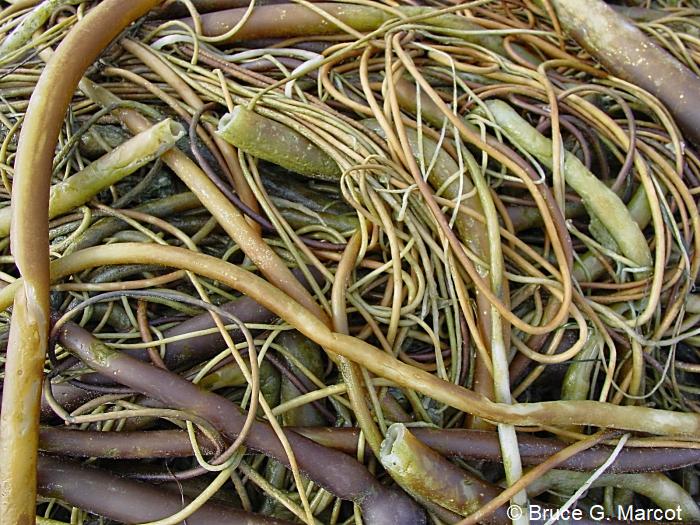
The mammal in this story is the sea otter, one of only two truly
marine species of otters in the world. Sea otters consume the uni
(reproductive parts) of the purple
sea urchin, the echinoderm in this story, helping to keep the urchin
populations at bay, so to speak. The loss of sea otters in much of the coastal
area has eliminated a key checkpoint on the urchins.
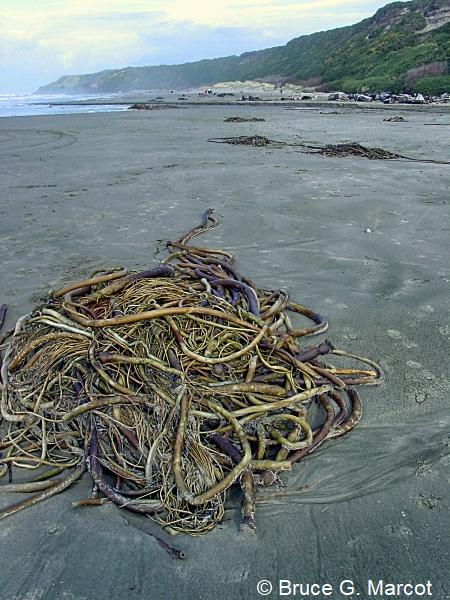
In the marine environment,
bull
kelp -- also called bull
whip
kelp -- can help buffer the
energy of currents and sea waves,
helping to reduce the impact of
major storm surge along an
inhabited coastline, much as
mangrove forests do in much
of the world.
Another predator of the purple sea
urchin is the sunflower seastar ("starfish"). The problem
along much of the west coast, USA, is the dearth of starfish caused by warming
sea waters, thus allowing urchin populations to magnify. The sunflower
seastar has been reduced to such small populations that the species is now
designated as critically
endangered.
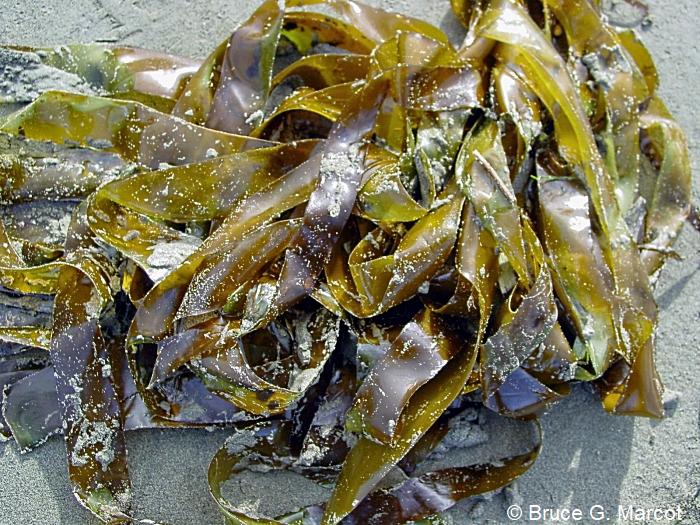
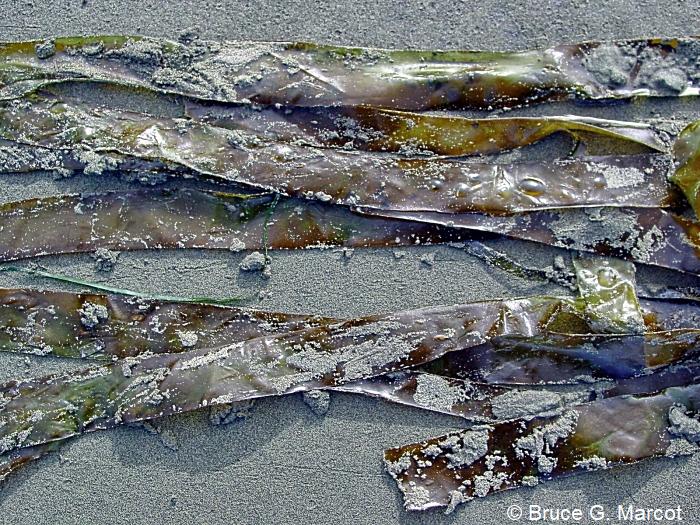
Part of the bull kelp are the long ribbons
that can serve as hiding habitat for fish and other
organisms in the water column.
So the purple sea urchins, now unchecked, are consuming massive amounts of bull
kelp, which otherwise provide important
habitat for red abalone, red sea urchins, spawning herring, juvenile
salmon, rockfish, and more ... most of which are harvested and provide for an
important commercial fishery industry.
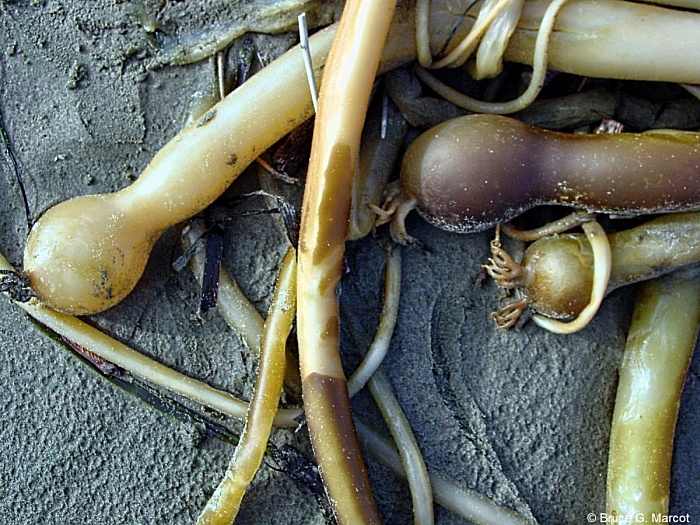
These bulbs are the "floats" of the bull kelp
that, filled with air, keep the arms and ribbons
of the kelp forest afloat in the water column.
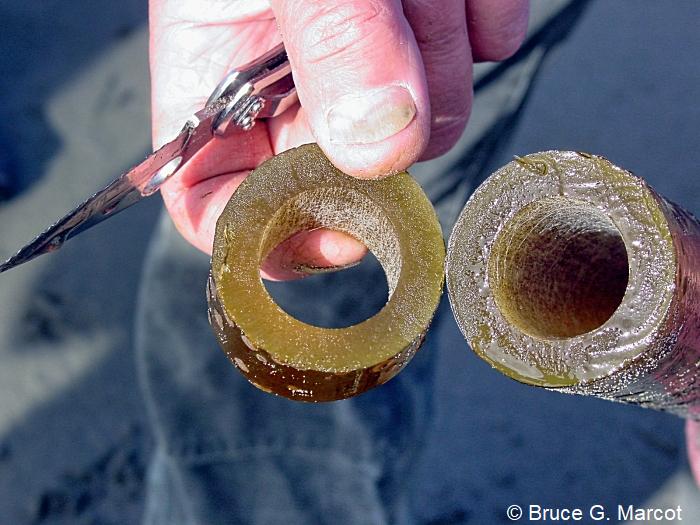
And here is the secret to the kelp forests:
the stems are hollow and thus float erect
in the water column, forming the "forest"
appearance of the kelp thickets.
Acknowledgments:
My thanks to friend, colleague, and
professor Dr. Terry Roelofs for pointing me to the wonderfully unique
aspects of this marine alga, and for providing the cross-section sample
in the above photo.
|
Index |
Location | Search | About EPOW | ... Next >
Google Earth locations